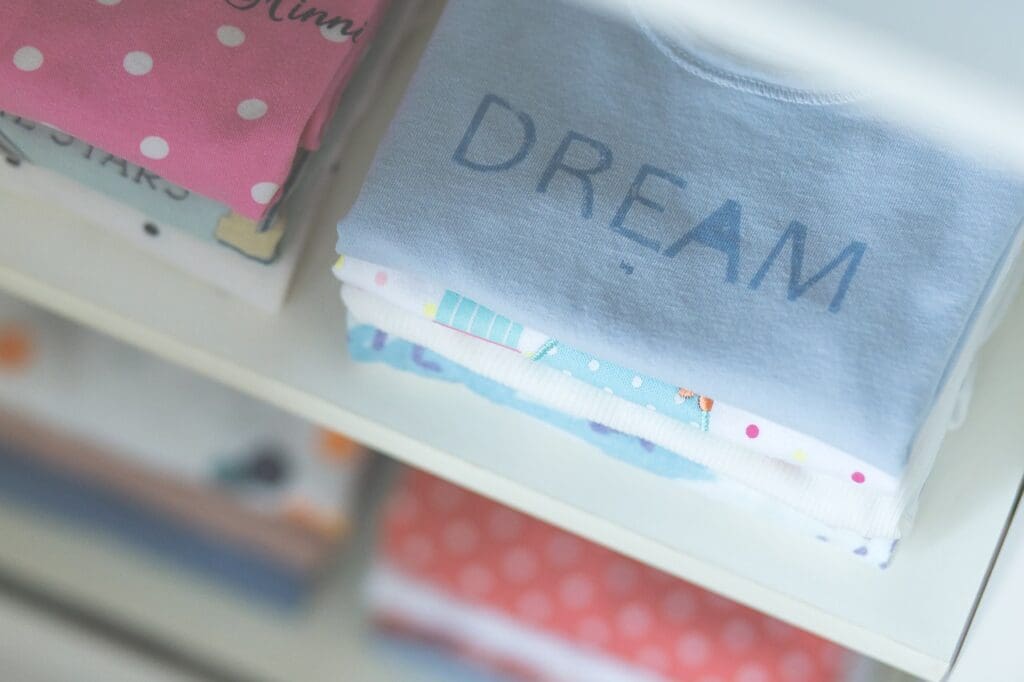Becoming a parent is a challenge on its own. Besides starting to have the most backbreaking job in the world and in your life – making your child safe and getting to see it healthy, successful and happy – there are everyday worries, but no less significant, that you have to attend to first.
And in the plethora of those things to pay attention to, such as proper nutrition, enough sleep, cognitive development, and play, there is an area that every parent cares for – and those are the materials and fabrics that their baby will be surrounded by and clothed with. Knowing how babies’ skin is very sensitive, this topic asks for a wider description of materials and fabrics you should avoid and why.
Table of Contents
Skin Problems
The baby’s skin is often prone to eczema, atopic problems, redness, and seborrhea. Besides using appropriate skin cosmetics, the fabrics you choose can also play a big role in irritation of their sensitive skin and set off eczema storming. If you think skin issues are mere that and that they can be solved with a lotion or a creme – you will just get yourself and the baby in a loop of itching, crying, and peeling while instead, you just need to take care of what touches your baby’s skin.
Most to-be-parents are getting all kinds of pieces of advice about anything. Among those, there’re surely the ones about avoiding synthetic fabrics and choosing only the natural ones – linen, cotton, silk… But if you’re a new parent that doesn’t have anyone (with or without experience) to counsel on all of the things regarding handling a baby right, sites in the manner of The Good Nursery can be helpful and eye-opening. Here you can find many tips, pearls of wisdom, training, reviews, and opinions about the safest, most natural, and gentlest products for your children.
What to Avoid
The consequences are already known. But let’s see what fabrics and materials you should keep away from your baby’s skin, so the reaction doesn’t happen:
Nylon and Polyester
Although everywhere, in almost every piece of clothing, you should try and find the ones without these components. Both these fabrics are manufactured using petrochemical-based additives. In some of the studies, it is found that synthetic materials such as these are closely connected to asthma, allergies, and other lung infections in children, for a long period of time.
Teflon
Yes, it is understandable that the amount of clothes waiting to be ironed suddenly seems enormous with the baby’s arrival, but stay away from the pieces that state they do not need ironing or with the label saying wrinkle-resistant. Most likely, they are Teflon-coated, and it is known that Teflon-involved things easily catch on fire if exposed to heat, and by the time they start to emit toxic gases that are definitely going to be harmful to your baby.
Acrylic
The biggest advantage of this substitution for wool is the price of the clothes containing it since they are much cheaper than the products made of 100% wool. Again, as with many synthetic materials, it is made and undergone through various toxic conducts and substances, making it inappropriate for a child.
Acetate and Triacetate
Although manufactured using cellulose and wood processing, many unsafe and noxious chemical treatments are also involved. You just need to remember that every chemically processed material is a silent detonator of children’s allergic reactions, rashes, and lung problems.
What About Wool?
Therefore, the natural rule is to use natural-based materials for our youngsters. They should be smooth, flexible, and pleasant to the touch and skin. But, there is one material that adults also find somewhat rough and unpleasant at times.
Wool is a natural material, yes, but it has a tendency to be too raw, and its texture is known to irritate babies’ skins. It is advisable to avoid it, although it is one of the most natural materials there. The best compensation would be to have a layer of clothing in between the wool and the baby’s skin, as it’s wonderful to keep your baby warm.

Synthetic materials are a norm and normality in our everyday lives, and while the adult skin might be used to it or has grown more protective, the skin of the most sensible ones is not meant for harsh and toxic materials still. And sure, the natural-based fabrics also undergo a certain amount of processing. They are still much better than synthetic ones. They still absorb sweat and let the skin breathe.
Featured




